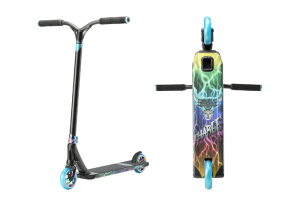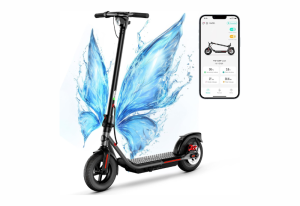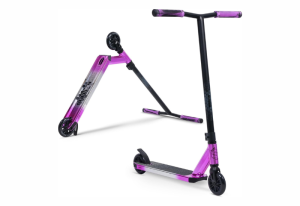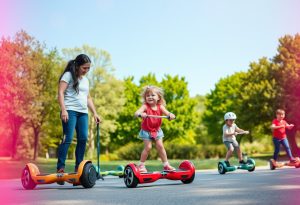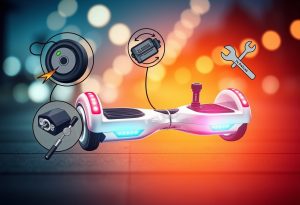Perplexed about whether hoverboards are a secure mode of transportation for their children, many parents are seeking reliable information on the matter. With the rising popularity of hoverboards, it’s crucial for parents to understand the potential risks and safety measures associated with these devices. In this informative post, we will delve into the topic of hoverboard safety for kids, providing essential guidance for parents to ensure their child’s well-being while using these products. From important safety tips to potential hazards, we will cover everything parents need to know about hoverboards and their kids’ safety.
Table of Contents
ToggleUnderstanding Hoverboards
To understand the safety implications of hoverboards for kids, it’s important to have a clear understanding of what hoverboards are and how they work. In this chapter, we’ll dive into the basics of hoverboards and provide essential information for parents considering purchasing one for their children.
What Are Hoverboards?
One of the most popular personal transportation devices on the market, hoverboards are self-balancing, battery-operated scooters. They typically consist of a platform for the rider’s feet, with two wheels on either side, and are propelled by the rider shifting their weight to control the direction and speed of movement.
How Do Hoverboards Work?
Hoverboards rely on a combination of gyroscopic sensors, microprocessors, and motors to maintain balance and movement. The sensors detect the rider’s movements and make adjustments to keep the board stable, while the microprocessors interpret these signals and control the motors to drive the wheels accordingly. As a result, riders can maneuver the hoverboard simply by leaning in the desired direction.
The combination of sensors, microprocessors, and motors enables hoverboards to achieve a smooth, responsive, and intuitive riding experience. The technology allows for precise control and a dynamic riding experience that has contributed to the popularity of hoverboards among kids and adults alike.
Safety Concerns and Risks
Obviously, as with any motorized or electronic device, hoverboards come with their own set of safety concerns and risks. It’s important for parents to be aware of these potential dangers and take necessary precautions to ensure the safety of their kids while using hoverboards.
Common Injuries Associated with Hoverboards
One of the most common injuries associated with hoverboards is falls, which can result in fractures, sprains, and head injuries. Additionally, there have been reports of burns from overheating batteries and collisions with obstacles or vehicles.
Other potential risks include electric shock from faulty wiring and potential injury from falling off an unregulated or poorly manufactured hoverboard. These injuries emphasize the importance of using safety gear, such as helmets and wrist guards, when riding hoverboards.
Reports and Statistics on Hoverboard Accidents
On the subject of reports and statistics, hoverboard accidents have been on the rise in recent years. A study conducted by the Consumer Product Safety Commission found that there were approximately 26,854 hoverboard-related injuries treated in U.S. emergency departments from 2015 to 2019. This data highlights the need for increased awareness and precautions when it comes to hoverboard safety.
Hoverboard accidents can result in serious injuries, with a significant portion of them involving children under the age of 18. It’s crucial for parents to stay informed about the risks and make informed decisions regarding the use of hoverboards by their kids.
Safety Measures for Kids
Unlike other toys, hoverboards require specific safety measures to ensure the well-being of children. It is crucial for parents to enforce these safety measures to prevent accidents and injuries while their kids enjoy riding their hoverboards.
Age and Weight Recommendations
Safety guidelines dictate that hoverboards are not suitable for children under the age of 8, as their motor skills and balance may not be fully developed. Additionally, it is important to adhere to the weight recommendations provided by the manufacturer to prevent overload and potential loss of control. Safety is paramount when it comes to choosing the right hoverboard for your child.
Essential Safety Gear and Practices
Safety gear such as helmets, knee pads, and elbow pads are essential when it comes to riding hoverboards. It is also important to teach children the necessary safety practices, such as avoiding crowded areas, wearing bright clothing for visibility, and staying clear of obstacles and rough terrain. Ensuring that children are well-versed in these safety measures will greatly reduce the risk of accidents.
This will provide children with the necessary protection and knowledge to enjoy their hoverboards safely while giving parents peace of mind.
Parental Guidance and Supervision
For parents considering purchasing hoverboards for their kids, it is crucial to understand the importance of parental guidance and supervision. Hoverboards may offer an exciting mode of transportation and entertainment for kids, but without proper oversight, they can pose potential risks and safety concerns.
Educating Kids on Hoverboard Usage
With the rise in popularity of hoverboards, it is essential for parents to educate their kids on safe and responsible hoverboard usage. This includes teaching them the proper techniques for mounting and dismounting, maintaining balance, and navigating different terrains. It is also important to emphasize the significance of wearing safety gear such as helmets, knee and elbow pads, and wrist guards while using the hoverboard.
Setting Ground Rules and Monitoring
Rules should be established regarding where and when the hoverboards can be used, as well as the supervision required. It is vital for parents to set clear boundaries and guidelines to ensure the safety of their children while using hoverboards. Additionally, continuous monitoring of their kids’ hoverboard usage is essential to identify any potential safety issues and address them promptly.
Guidance and supervision are integral in ensuring that kids use hoverboards safely and responsibly. By setting ground rules, providing education on proper usage, and closely monitoring their activities, parents can help mitigate the risks associated with hoverboard usage and promote a safe and enjoyable experience for their children.
Conclusion: Are Hoverboards Safe for Kids and What Should Parents Know?
Following this discussion, it is clear that hoverboards can pose potential safety risks for kids. Parents should be aware of the potential hazards, including falls, collisions, and battery issues. It is important for parents to carefully consider the age and maturity of their child before allowing them to use a hoverboard, and to closely supervise their usage. Additionally, parents should ensure that the hoverboard meets safety standards and that their child wears appropriate safety gear, such as helmets, knee pads, and wrist guards. By staying informed and taking necessary precautions, parents can help ensure their child’s safety while using hoverboards.

